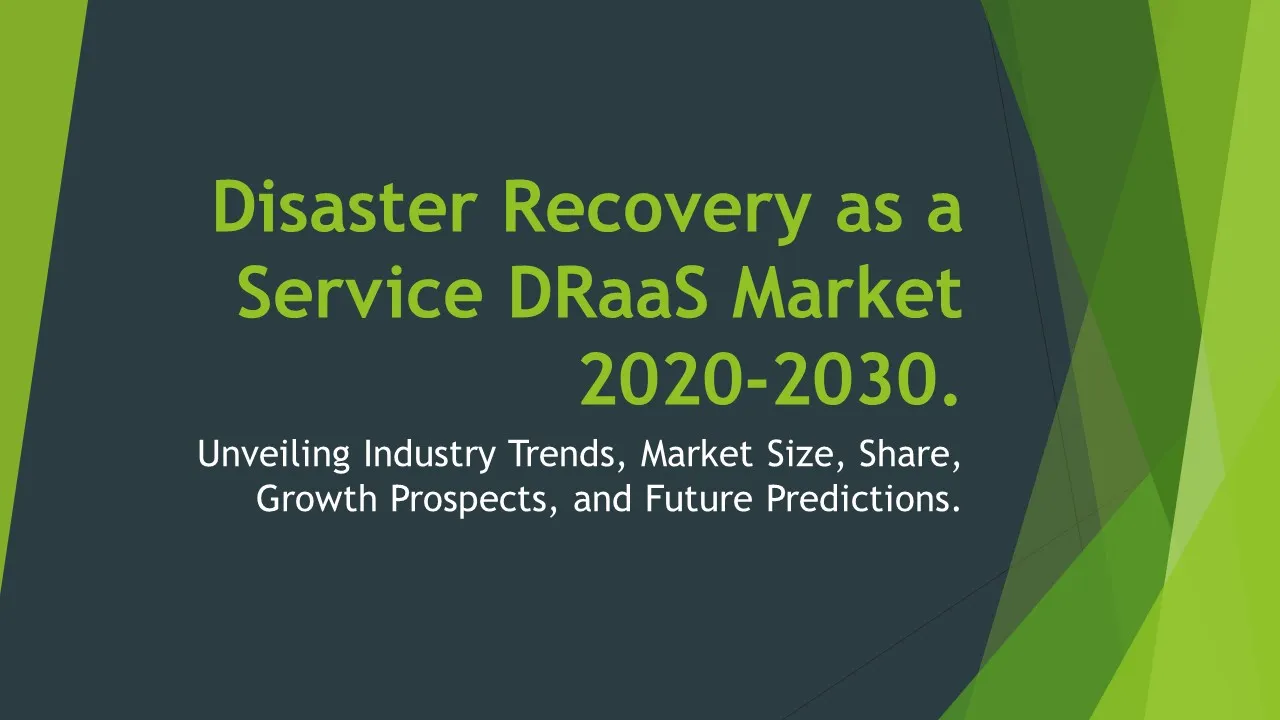Account Aggregators
Account Aggregators Market Segments - by Type (Personal Finance Aggregators, Business Finance Aggregators, Investment Aggregators, Billing Aggregators, Loyalty Aggregators), Application (Budgeting, Financial Planning, Expense Tracking, Investment Management, Payment Processing), Data Type (Banking Data, Investment Data, Insurance Data, Tax Data, Loan Data), End-User (Individuals, SMEs, Large Enterprises, Financial Institutions), and Region (North America, Europe, Asia Pacific, Latin America, Middle East & Africa) - Global Industry Analysis, Growth, Share, Size, Trends, and Forecast 2025-2035
- Report Preview
- Table Of Content
- Segments
- Methodology
Account Aggregators Market Outlook
The global Account Aggregators market is poised for significant growth, projected to reach USD 1.7 billion by 2035, expanding at a compound annual growth rate (CAGR) of 25% from 2025 to 2035. The growth in this market is largely driven by the increasing adoption of digital financial services and the growing demand for personal finance management tools among consumers. Additionally, as businesses seek to enhance their operational efficiency and customer engagement, the integration of account aggregation services is becoming essential for financial institutions and service providers. The rise of fintech solutions is also prompting traditional banks and financial service providers to adopt account aggregation technologies, leading to heightened competition and innovation in the market. Furthermore, the growing awareness regarding financial health and the importance of budgeting tools is expected to further propel the market growth in the coming years.
Growth Factor of the Market
Several key growth factors are contributing to the expansion of the Account Aggregators market. Firstly, the increasing penetration of smartphones and the internet globally has facilitated easier access to financial management tools, enabling users to consolidate their financial data in one place. Secondly, the growing emphasis on financial literacy among consumers is driving demand for tools that help individuals and businesses manage their finances more effectively. Thirdly, regulatory changes in the financial sector are encouraging the adoption of account aggregation services as a means of improving transparency and consumer protection. Fourthly, the rise of open banking initiatives worldwide is providing consumers with greater control over their financial data, thus enhancing the appeal of account aggregators. Lastly, the growing trend of personalized financial services, where institutions offer tailored solutions based on aggregated data, is boosting the market further.
Key Highlights of the Market
- The Account Aggregators market is projected to grow at a CAGR of 25% from 2025 to 2035.
- Personal Finance Aggregators are the leading segment within the market.
- North America dominates the market, accounting for approximately 40% of total market revenue.
- There is a rising trend of integrating AI and machine learning into account aggregation services.
- Investment Aggregators are expected to witness the highest growth rate during the forecast period.
By Type
Personal Finance Aggregators:
Personal Finance Aggregators are designed to help individuals manage their personal finances by consolidating various financial accounts into a single platform. These aggregators enable users to view all their financial transactions, track spending habits, and set budgetary goals. The convenience of accessing multiple accounts through one interface simplifies the management of personal finances, leading to better financial decisions. With increasing consumer awareness about budgeting and saving, personal finance aggregators are witnessing a surge in adoption. Furthermore, many of these platforms incorporate features such as expense categorization, financial goal setting, and spending alerts, which significantly enhance user engagement and make personal finance management more accessible.
Business Finance Aggregators:
Business Finance Aggregators cater to small and medium-sized enterprises (SMEs) and large organizations by providing a consolidated view of their financial data across various accounts. These platforms facilitate better decision-making by allowing businesses to track cash flows, manage expenses, and analyze financial performance in real-time. The need for financial transparency and the demand for accurate financial reporting are driving the adoption of business finance aggregators. Additionally, these tools often come with advanced analytics features that help businesses identify trends and make proactive financial decisions, ultimately contributing to increased profitability and operational efficiency. As businesses continue to embrace digital transformation, the role of business finance aggregators is becoming increasingly critical.
Investment Aggregators:
Investment Aggregators focus on helping users manage their various investment portfolios in one place. These platforms allow users to aggregate data from multiple investment accounts, providing a comprehensive view of their investments, including stocks, bonds, mutual funds, and ETFs. By offering insights and analytics on investment performance, these aggregators empower users to make informed investment decisions. The growing interest in investment opportunities among retail investors and the increasing complexity of investment portfolios are driving the demand for investment aggregators. Furthermore, many platforms are integrating advanced features like performance tracking, risk assessment, and personalized investment recommendations, which significantly enhance the user experience and attract more customers.
Billing Aggregators:
Billing Aggregators streamline the billing process for consumers and businesses by consolidating multiple bills into a single platform. These services help users manage their recurring payments, track billing cycles, and ensure timely payments, thus avoiding late fees and penalties. As the number of subscriptions and recurring payments continues to rise, the demand for billing aggregation services is increasing. Additionally, these platforms often provide features such as payment reminders and automated payment options, enhancing user convenience. The increasing trend toward digitization and the move away from traditional billing methods are expected to further boost the growth of billing aggregators in the market.
Loyalty Aggregators:
Loyalty Aggregators serve as platforms that consolidate various loyalty programs into a single interface, allowing consumers to track and manage their loyalty rewards efficiently. These aggregators enhance the customer experience by making it easier for consumers to redeem points and rewards across different retailers and service providers. The rising importance of customer loyalty in competitive markets is driving the demand for loyalty aggregators, as brands seek to retain customers by offering streamlined rewards programs. Moreover, these platforms often provide analytics that helps businesses understand customer behavior and optimize their loyalty strategies, creating a win-win situation for both consumers and businesses.
By Application
Budgeting:
Budgeting applications powered by Account Aggregators help users plan their finances by giving them a comprehensive view of their income and expenses. These tools enable users to set budgets, track spending, and identify areas where they can save money. The growing awareness of the significance of budgeting in achieving financial stability is driving the demand for these applications. Moreover, many platforms offer personalized budgeting advice based on aggregated data, enhancing the user experience and encouraging better financial habits. As consumers continue to prioritize financial wellness, budgeting applications are expected to witness robust growth in the coming years.
Financial Planning:
Financial planning applications utilize account aggregation to provide users with insights into their financial health and long-term goals. These tools often include features such as retirement planning, investment strategies, and savings goals, helping users make informed decisions about their financial future. The increasing complexity of personal finances and the rising concern about retirement savings are propelling the demand for financial planning applications. Additionally, many platforms offer scenario analysis, enabling users to evaluate different financial strategies and their potential outcomes. As consumers become more proactive about their financial planning, this application segment is poised for significant growth.
Expense Tracking:
Expense tracking applications help users monitor their spending habits and categorize expenses, making it easier to identify trends and adjust budgets accordingly. These tools often leverage account aggregation to provide real-time updates on financial transactions, giving users a clear picture of their spending patterns. The increasing need for financial accountability among consumers is driving the adoption of expense tracking applications. Furthermore, many platforms provide visualizations and reports that help users understand their spending behaviors, encouraging better financial management. As consumers become more aware of their financial health, this application segment is expected to continue expanding.
Investment Management:
Investment management applications use account aggregation to help users manage their investment portfolios across multiple platforms. These tools provide insights into investment performance, asset allocation, and risk assessment, enabling users to make informed investment decisions. The growing interest in investment opportunities and the rise of retail investing are driving the demand for investment management applications. Additionally, many platforms include features such as performance tracking, market analysis, and personalized investment recommendations, enhancing the user experience. As more individuals seek to take control of their investments, this segment is likely to see substantial growth.
Payment Processing:
Payment processing applications powered by account aggregation simplify the payment experience for consumers and businesses. These applications enable users to manage multiple payment methods and keep track of their payment history in one place. The convenience of having a centralized platform for payment processing is driving the demand for these applications, especially as e-commerce continues to grow. Additionally, many platforms offer features like automated payments, transaction alerts, and integration with other financial management tools, enhancing the overall user experience. With the increasing reliance on digital payment solutions, this application segment is expected to thrive.
By Data Type
Banking Data:
Banking data is one of the primary data types in account aggregation, allowing users to consolidate information from various bank accounts. This data type includes transaction history, account balances, and payment details, providing users with a comprehensive view of their financial situation. The importance of banking data in personal finance management is driving the demand for account aggregators that focus on this segment. By aggregating banking data, users can track their spending, manage budgets, and analyze cash flows effectively, which helps them make informed financial decisions. The rise of digital banking services is further propelling the growth of this segment.
Investment Data:
Investment data consists of information related to users' investment portfolios, including performance metrics, asset allocation, and market trends. Account aggregators that utilize investment data enable users to view their investments across various platforms, thereby enhancing portfolio management. The increasing interest in investments and the complexity of managing multiple accounts are driving the demand for investment data aggregation. By providing users with insights and analytics, these platforms empower them to make informed investment decisions and optimize their portfolio performance. As the investment landscape continues to evolve, the significance of investment data aggregation will likely increase.
Insurance Data:
Insurance data aggregation helps users consolidate their insurance policies and related information into a single platform. This data type includes details about coverage, premiums, and claims, making it easier for users to manage their insurance needs. The growing awareness of the importance of insurance in financial planning is driving demand for insurance data aggregation. With many consumers holding multiple insurance policies, having a centralized view of this information enhances financial organization and enables users to make informed decisions regarding their coverage. As individuals seek to protect their assets and manage risk, the relevance of insurance data aggregation is expected to grow.
Tax Data:
Tax data aggregation involves the consolidation of users' tax-related information, including income statements, deductions, and credits. This data type is crucial for effective tax planning and compliance, particularly as tax regulations become more complex. The rising awareness of the importance of tax optimization and the growing need for financial transparency are driving the demand for tax data aggregation. By providing users with a centralized view of their tax information, account aggregators enable them to make informed decisions about tax-saving strategies and ensure compliance with regulations. As tax-related complexities increase, the significance of tax data aggregation will continue to rise.
Loan Data:
Loan data aggregation focuses on consolidating information related to various loans, including mortgages, personal loans, and student loans. This data type allows users to track their loan balances, payment schedules, and interest rates in one place. The growing number of individuals managing multiple loans is driving the demand for loan data aggregation. By providing users with a comprehensive view of their loan obligations, these platforms help them manage their debt effectively and make informed decisions regarding repayment strategies. As borrowing becomes more common, the relevance of loan data aggregation will likely increase.
By User
Individuals:
Individuals are a significant user segment in the Account Aggregators market, utilizing these services to manage personal finances and investments. The convenience of consolidating various financial accounts into a single platform allows individuals to track spending, set budgets, and monitor investment performance effectively. The increasing focus on personal financial health is driving the adoption of account aggregation services among this user group. Moreover, many platforms provide personalized insights and recommendations based on aggregated data, enhancing the overall user experience. As individuals become more proactive in managing their finances, this segment is expected to continue growing.
SMEs:
Small and medium-sized enterprises (SMEs) utilize account aggregation services to streamline their financial management processes. These services enable SMEs to consolidate financial data from various accounts, facilitating better cash flow management and expense tracking. The need for financial transparency and efficient reporting is driving the adoption of account aggregation solutions among SMEs. Additionally, many platforms offer features that cater specifically to business needs, such as invoice tracking, expense categorization, and financial analytics. As SMEs increasingly embrace digital financial tools, the demand for account aggregation services in this segment is set to rise.
Large Enterprises:
Large enterprises leverage account aggregation services to manage complex financial operations across multiple departments and regions. These platforms provide a centralized view of financial data, allowing organizations to analyze performance, manage budgets, and optimize cash flows efficiently. The growing need for operational efficiency and financial accountability in large organizations is driving the adoption of account aggregation solutions. Additionally, many platforms offer advanced analytics and reporting capabilities that support strategic decision-making at the executive level. As large enterprises continue to prioritize digital transformation, the demand for account aggregation services is expected to grow significantly.
Financial Institutions:
Financial institutions utilize account aggregation services to enhance customer experience and provide personalized financial solutions. By offering account aggregation capabilities, these institutions can gain insights into their customers' financial behaviors and preferences, enabling them to tailor their services accordingly. The increasing focus on customer-centric solutions and the rise of open banking initiatives are driving the adoption of account aggregation among financial institutions. Additionally, many platforms provide tools that help institutions manage compliance and risk effectively. As competition intensifies in the financial sector, the relevance of account aggregation services for financial institutions will continue to grow.
By Region
North America holds the largest share of the Account Aggregators market, accounting for approximately 40% of total market revenue. The region's dominance can be attributed to the presence of a well-established fintech ecosystem, high internet penetration, and a growing consumer base that values digital financial services. The United States, in particular, is home to numerous innovative fintech companies that are driving advancements in account aggregation technologies. The market in North America is projected to grow at a CAGR of 20% through 2035, driven by the increasing demand for personalized financial solutions, regulatory developments, and the adoption of open banking practices.
Europe is the second-largest market for account aggregators, representing about 30% of the global share. The region's growth is fueled by a strong focus on financial technology innovation, coupled with supportive regulatory frameworks such as PSD2 (Payment Services Directive 2), which promotes open banking and data sharing. Countries like the UK, Germany, and France are leading the way in adopting account aggregation services. The European market is also witnessing increasing partnerships between fintech companies and traditional banks to enhance service offerings, which is expected to further drive growth in the coming years. As digital transformation accelerates in the region, the demand for account aggregators is set to expand significantly.
Opportunities
The Account Aggregators market presents numerous opportunities for growth and innovation. One of the most significant opportunities lies in the integration of advanced technologies such as artificial intelligence (AI) and machine learning (ML) into account aggregation platforms. These technologies can enhance the user experience by providing personalized insights and recommendations based on aggregated financial data. For instance, AI can help users identify spending patterns, suggest better budgeting strategies, and predict future financial trends. As consumers increasingly demand tailored financial solutions, the integration of AI and ML into account aggregators can lead to improved customer satisfaction and loyalty, thereby driving market growth.
Another opportunity exists in expanding account aggregation services to underserved markets. As financial inclusion becomes a global priority, there is a growing need for affordable and accessible financial management tools among low-income individuals and small businesses. By tailoring account aggregation services to meet the unique needs of these segments, companies can tap into new customer bases and drive market growth. Additionally, partnerships with local banks, credit unions, and fintech companies can facilitate the development and distribution of these services, making them more widely available. As the demand for financial literacy and self-management increases, targeting underserved markets can present significant growth opportunities for account aggregator providers.
Threats
The Account Aggregators market faces several threats that could impede its growth trajectory. One of the primary threats is the increasing concerns regarding data privacy and security. As account aggregators require access to sensitive financial information, any data breaches or unauthorized access can lead to significant repercussions for both consumers and service providers. As a result, regulatory bodies are imposing stricter data protection regulations, which may create challenges for account aggregator companies in terms of compliance and operational costs. Additionally, the potential for cyberattacks remains a constant threat, as malicious actors seek to exploit vulnerabilities in digital financial platforms. Companies must prioritize robust security measures to protect user data and maintain trust.
Another significant threat to the Account Aggregators market is the intense competition from traditional financial institutions and emerging fintech companies. As consumer preferences shift toward digital solutions, traditional banks are increasingly investing in their own account aggregation capabilities to retain customers. This competition can lead to price wars, reduced profit margins, and increased customer acquisition costs for account aggregator providers. Furthermore, the rapid pace of technological advancements may render existing solutions obsolete, requiring companies to continually innovate and adapt to remain relevant. As the market becomes more saturated, companies must differentiate their offerings to capture and retain customers effectively.
Competitor Outlook
- Yodlee
- Finicity
- Plaid
- TrueLayer
- Mint
- Quicken
- Personal Capital
- MoneyDashboard
- Wealthfront
- Acorns
- Expensify
- Envestnet
- Kabbage
- Simple
- Spendee
The competitive landscape of the Account Aggregators market is characterized by a diverse array of players, ranging from established financial institutions to innovative fintech startups. Many of these companies are leveraging technological advancements to enhance their service offerings and improve user experiences. The focus is not only on providing account aggregation but also on offering value-added services such as budgeting tools, expense tracking, and investment management. As consumer demand for holistic financial management solutions continues to rise, companies are strategically positioning themselves to capture market share through partnerships, acquisitions, and product diversification.
Leading companies such as Yodlee and Plaid have cemented their positions in the market by providing robust data aggregation services that enable third-party applications to access users' financial information securely. Yodlee, for instance, has established partnerships with multiple financial institutions, creating a vast network that enhances its service offerings. Plaid, on the other hand, has focused on integrating with various fintech applications to broaden its reach and provide seamless user experiences. As these companies continue to invest in innovation and expand their service portfolios, they remain strong competitors in the rapidly evolving account aggregation landscape.
Additionally, newer entrants like Acorns and Wealthfront are gaining traction by catering to specific consumer needs, such as micro-investing and automated financial planning. These companies are targeting younger demographics who are more inclined to use digital financial services, thereby enhancing their growth potential. Moreover, the growing trend of open banking is enabling these companies to collaborate with traditional banks, further strengthening their market presence. As competition intensifies, companies are increasingly focusing on differentiating their offerings through enhanced user interfaces, personalized recommendations, and improved security measures.
1 Appendix
- 1.1 List of Tables
- 1.2 List of Figures
2 Introduction
- 2.1 Market Definition
- 2.2 Scope of the Report
- 2.3 Study Assumptions
- 2.4 Base Currency & Forecast Periods
3 Market Dynamics
- 3.1 Market Growth Factors
- 3.2 Economic & Global Events
- 3.3 Innovation Trends
- 3.4 Supply Chain Analysis
4 Consumer Behavior
- 4.1 Market Trends
- 4.2 Pricing Analysis
- 4.3 Buyer Insights
5 Key Player Profiles
- 5.1 Mint
- 5.1.1 Business Overview
- 5.1.2 Products & Services
- 5.1.3 Financials
- 5.1.4 Recent Developments
- 5.1.5 SWOT Analysis
- 5.2 Plaid
- 5.2.1 Business Overview
- 5.2.2 Products & Services
- 5.2.3 Financials
- 5.2.4 Recent Developments
- 5.2.5 SWOT Analysis
- 5.3 Acorns
- 5.3.1 Business Overview
- 5.3.2 Products & Services
- 5.3.3 Financials
- 5.3.4 Recent Developments
- 5.3.5 SWOT Analysis
- 5.4 Simple
- 5.4.1 Business Overview
- 5.4.2 Products & Services
- 5.4.3 Financials
- 5.4.4 Recent Developments
- 5.4.5 SWOT Analysis
- 5.5 Yodlee
- 5.5.1 Business Overview
- 5.5.2 Products & Services
- 5.5.3 Financials
- 5.5.4 Recent Developments
- 5.5.5 SWOT Analysis
- 5.6 Kabbage
- 5.6.1 Business Overview
- 5.6.2 Products & Services
- 5.6.3 Financials
- 5.6.4 Recent Developments
- 5.6.5 SWOT Analysis
- 5.7 Quicken
- 5.7.1 Business Overview
- 5.7.2 Products & Services
- 5.7.3 Financials
- 5.7.4 Recent Developments
- 5.7.5 SWOT Analysis
- 5.8 Spendee
- 5.8.1 Business Overview
- 5.8.2 Products & Services
- 5.8.3 Financials
- 5.8.4 Recent Developments
- 5.8.5 SWOT Analysis
- 5.9 Finicity
- 5.9.1 Business Overview
- 5.9.2 Products & Services
- 5.9.3 Financials
- 5.9.4 Recent Developments
- 5.9.5 SWOT Analysis
- 5.10 Envestnet
- 5.10.1 Business Overview
- 5.10.2 Products & Services
- 5.10.3 Financials
- 5.10.4 Recent Developments
- 5.10.5 SWOT Analysis
- 5.11 Expensify
- 5.11.1 Business Overview
- 5.11.2 Products & Services
- 5.11.3 Financials
- 5.11.4 Recent Developments
- 5.11.5 SWOT Analysis
- 5.12 TrueLayer
- 5.12.1 Business Overview
- 5.12.2 Products & Services
- 5.12.3 Financials
- 5.12.4 Recent Developments
- 5.12.5 SWOT Analysis
- 5.13 Wealthfront
- 5.13.1 Business Overview
- 5.13.2 Products & Services
- 5.13.3 Financials
- 5.13.4 Recent Developments
- 5.13.5 SWOT Analysis
- 5.14 MoneyDashboard
- 5.14.1 Business Overview
- 5.14.2 Products & Services
- 5.14.3 Financials
- 5.14.4 Recent Developments
- 5.14.5 SWOT Analysis
- 5.15 Personal Capital
- 5.15.1 Business Overview
- 5.15.2 Products & Services
- 5.15.3 Financials
- 5.15.4 Recent Developments
- 5.15.5 SWOT Analysis
- 5.1 Mint
6 Market Segmentation
- 6.1 Account Aggregators Market, By Type
- 6.1.1 Personal Finance Aggregators
- 6.1.2 Business Finance Aggregators
- 6.1.3 Investment Aggregators
- 6.1.4 Billing Aggregators
- 6.1.5 Loyalty Aggregators
- 6.2 Account Aggregators Market, By User
- 6.2.1 Individuals
- 6.2.2 SMEs
- 6.2.3 Large Enterprises
- 6.2.4 Financial Institutions
- 6.3 Account Aggregators Market, By Data Type
- 6.3.1 Banking Data
- 6.3.2 Investment Data
- 6.3.3 Insurance Data
- 6.3.4 Tax Data
- 6.3.5 Loan Data
- 6.4 Account Aggregators Market, By Application
- 6.4.1 Budgeting
- 6.4.2 Financial Planning
- 6.4.3 Expense Tracking
- 6.4.4 Investment Management
- 6.4.5 Payment Processing
- 6.1 Account Aggregators Market, By Type
7 Competitive Analysis
- 7.1 Key Player Comparison
- 7.2 Market Share Analysis
- 7.3 Investment Trends
- 7.4 SWOT Analysis
8 Research Methodology
- 8.1 Analysis Design
- 8.2 Research Phases
- 8.3 Study Timeline
9 Future Market Outlook
- 9.1 Growth Forecast
- 9.2 Market Evolution
10 Geographical Overview
- 10.1 Europe - Market Analysis
- 10.1.1 By Country
- 10.1.1.1 UK
- 10.1.1.2 France
- 10.1.1.3 Germany
- 10.1.1.4 Spain
- 10.1.1.5 Italy
- 10.1.1 By Country
- 10.2 Asia Pacific - Market Analysis
- 10.2.1 By Country
- 10.2.1.1 India
- 10.2.1.2 China
- 10.2.1.3 Japan
- 10.2.1.4 South Korea
- 10.2.1 By Country
- 10.3 Latin America - Market Analysis
- 10.3.1 By Country
- 10.3.1.1 Brazil
- 10.3.1.2 Argentina
- 10.3.1.3 Mexico
- 10.3.1 By Country
- 10.4 North America - Market Analysis
- 10.4.1 By Country
- 10.4.1.1 USA
- 10.4.1.2 Canada
- 10.4.1 By Country
- 10.5 Account Aggregators Market by Region
- 10.6 Middle East & Africa - Market Analysis
- 10.6.1 By Country
- 10.6.1.1 Middle East
- 10.6.1.2 Africa
- 10.6.1 By Country
- 10.1 Europe - Market Analysis
11 Global Economic Factors
- 11.1 Inflation Impact
- 11.2 Trade Policies
12 Technology & Innovation
- 12.1 Emerging Technologies
- 12.2 AI & Digital Trends
- 12.3 Patent Research
13 Investment & Market Growth
- 13.1 Funding Trends
- 13.2 Future Market Projections
14 Market Overview & Key Insights
- 14.1 Executive Summary
- 14.2 Key Trends
- 14.3 Market Challenges
- 14.4 Regulatory Landscape
Segments Analyzed in the Report
The global Account Aggregators market is categorized based on
By Type
- Personal Finance Aggregators
- Business Finance Aggregators
- Investment Aggregators
- Billing Aggregators
- Loyalty Aggregators
By Application
- Budgeting
- Financial Planning
- Expense Tracking
- Investment Management
- Payment Processing
By Data Type
- Banking Data
- Investment Data
- Insurance Data
- Tax Data
- Loan Data
By User
- Individuals
- SMEs
- Large Enterprises
- Financial Institutions
By Region
- North America
- Europe
- Asia Pacific
- Latin America
- Middle East & Africa
Key Players
- Yodlee
- Finicity
- Plaid
- TrueLayer
- Mint
- Quicken
- Personal Capital
- MoneyDashboard
- Wealthfront
- Acorns
- Expensify
- Envestnet
- Kabbage
- Simple
- Spendee
- Publish Date : Jan 21 ,2025
- Report ID : IT-68870
- No. Of Pages : 100
- Format : |
- Ratings : 4.5 (110 Reviews)









